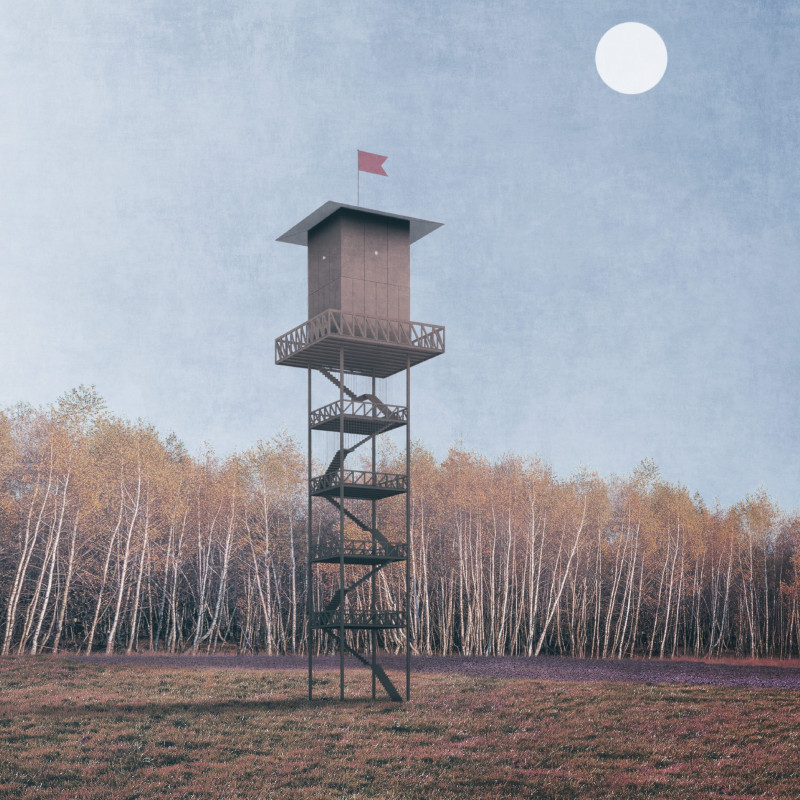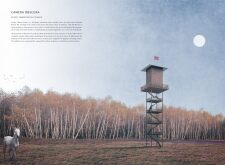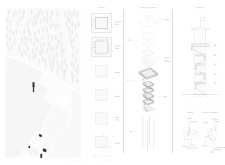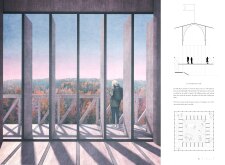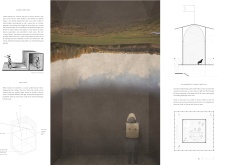5 key facts about this project
The Kurgi Observation Tower is located in the North Latvia Biosphere Reserve. It is a tall structure designed to provide both observation and interaction with nature. The tower reaches a height of 35 meters and consists of five storeys. The first four levels serve as accessible platforms, while the top floor features a fully glazed observation room that invites visitors to engage with the surroundings.
Design and Functionality
The design focuses on vertical movement, allowing visitors to ascend through various levels that offer differing views. The observation room on the fifth level is 36 square meters and includes a balcony that extends 2 meters wide around its perimeter. This extensive use of glass enhances the views of the natural landscape, providing a more immersive experience for those inside.
Transformation into a Camera Obscura
An important feature of the observation room is its ability to serve as a Camera Obscura. When the wooden shutters are closed, light enters through lenses positioned at the top of the tower and projects the landscape onto the dark walls inside. This simple yet effective design change encourages visitors to see the scenery in a new light and appreciate it differently.
Accessibility and Experience
The inclusion of a goods lift makes the tower accessible to all visitors, ensuring that everyone can enjoy the views. The design promotes engagement with the space, catering to people with varying mobility. As guests journey upwards, they encounter an evolving experience that enhances their connection to the tower and the surrounding area.
Material Considerations
Materials used in the Kurgi Observation Tower are intentional and practical. The wooden shutter panels are crucial for the Camera Obscura function and add a tactile element to the design. The extensive glazing in the observation room not only promotes visibility but also creates a clear line between the interior and the environment. This careful selection of materials contributes to a welcoming atmosphere while allowing natural light to fill the space.
The relationship between the visitor and the landscape is a focal point in the design. By creating spaces that invite the outside in, the tower encourages contemplation of the natural beauty surrounding it, allowing for a deeper appreciation of the local biosphere.


